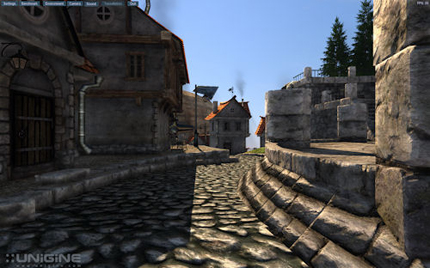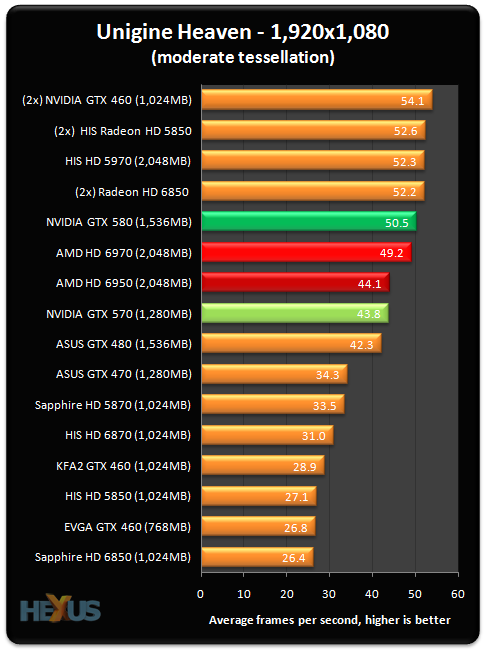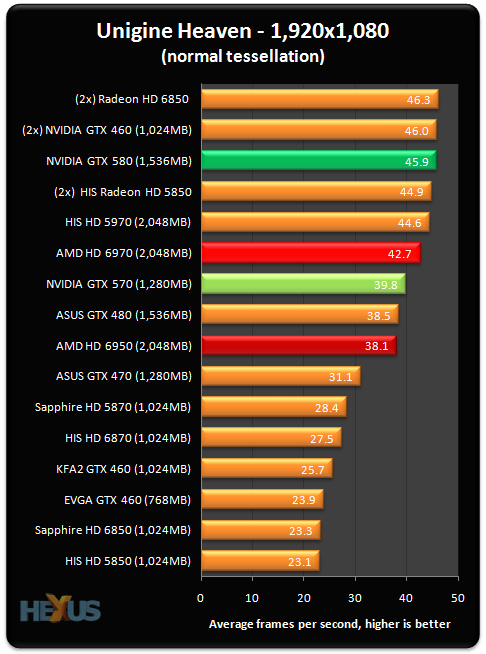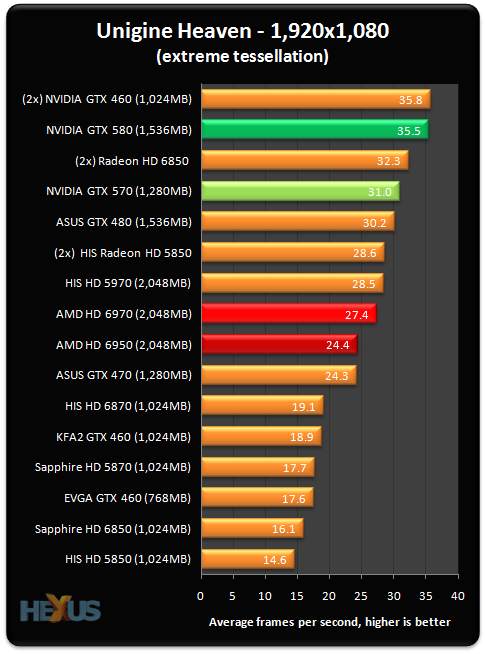Tessellation examined - Unigine Heaven
Hardware-based tessellation is a cornerstone of DirectX 11. The ability to efficiently generate massive geometry and then to apply what's known as a displacement map makes it a tasty technique for adding complexity and detail to a scene without a huge computational cost.
Unigine's Heaven 2.1 benchmark tests the ability of DX11 GPUs to provide varying levels of tessellation and extra in-benchmark detail.
Here's the standard benchmark run at 1,920x1,080 with 4x AA and 16x AF. Hover your mouse over the picture to see the difference between no tessellation and moderate tessellation.

We ran the DX11 cards through the benchmark/tessellation test at all four settings; disabled, moderate, normal and extreme.




The new Radeons have substantially improved tessellation performance at all settings, particular at the lower levels. We know that the double-sized geometry setup and 8th generation tessellation engine are the key drivers for the improved throughput.
Let's examine the perf with respect to the moderate setting - harnessing the level of tessellation used in many DX11 games.
| HD 6970 comparison at 'Moderate' | GTX 580 | GTX 570 | HD 5870 | HD 6950 |
| Faster/slower (per cent) | -2.6 | +12.3 | +46.9 | +11.6 |
| HD 6950 comparison at 'Moderate' | GTX 570 | GTX 470 | HD 5870 | HD 6970 |
| Faster/slower (per cent) | +6.8 | +28.6 | +31.6 | -10.4 |
It looks good for the new Radeons here. HD 6970 is able to increase the performance of HD 5870 by almost 50 per cent, and the HD 6950 beats out price-comparable competition.









